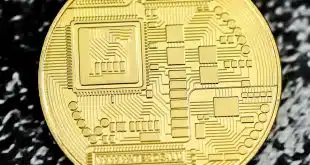There have been some successes, but loyalty programs tied into mobile-payment systems are still few and far between. What will it take to strengthen the relationship?
When you think of loyalty programs seamlessly integrated with mobile payments, only two examples loom large in the minds of the public and many in the mobile-payments industry. Both spring from coffee shops: Starbucks Corp.’s Starbucks Rewards, and DD Perks from Dunkin’ Donuts.
Both of those programs are linked to closed-loop prepaid cards.
Bringing loyalty programs out of a private-label context and into mobile wallets and related services offered by banks, the general-purpose card networks, and merchant acquirers has been a slow process. Among banks, JPMorgan Chase & Co. with its Chase Pay mobile wallet—a wallet linked to its own merchant clients and 94 million credit and debit card holders—is the clear early leader.
The Big 3 mobile-wallet “Pays,” Apple Inc.’s Apple Pay, Alphabet Inc.’s Android Pay, and Samsung Electronics Co. Inc.’s Samsung Pay, are playing catchup in pairing payments and loyalty (“What’s the Matter With Wallets?” September).
Jack Connors, who manages merchant relationships for Android Pay at Mountain View, Calif.-based Alphabet, parent company of Google, says Starbucks and Dunkin’ Donuts make it easy for customers to simultaneously pay and earn rewards.
“People who love Starbucks coffee get free coffee … the ‘Pays’ have to find a way to do that,” he said at the 2016 Mobile Payments Conference in Chicago in late August.
Indeed, merchant acquirers find that pairing loyalty and mobile payments is easier to talk about than bring to reality.
“It’s had a hard time finding the silver bullet,” says Ian Van Buskirk, vice president of product strategy at Atlanta-based Worldpay US Inc., the nation’s sixth-largest merchant acquirer.
Wary Merchants
What’s the problem?
Not surprisingly, there can be operational and programming issues galore in marrying a merchant’s loyalty program to a payment system developed by a bank, payment network, or a tech company such as Google. Integration issues can be expensive to resolve, and then comes the issue of whether usage revenues will produce an acceptable return on investment.
“I don’t think anybody has come up with the right solution for the merchant … and gives them the right ROI,” says Van Buskirk.
It’s not just a matter of dollars and cents for merchants, either. Merchants can be reluctant to share valuable consumer information, and the potential revenue to be derived from it, with outsiders.
“Retailers closely guard their loyalty currency and view mobile-wallet integration as another point of leverage for mobile-wallet providers,” James Watts, senior manager at Annapolis, Md.-based payments research and advisory firm First Annapolis Consulting Inc., says via email.
“This issue is more than inertia and an IT constraint,” Watts continues. “In a perfect world, retailers want customers engaging with their app, on their preferred platform, and not via a third-party solution. I think we are a ways off from retailers completely giving up the reins by allowing mobile wallets to control their rewards currency.”
Then there is the consumer side. Many consumers sign up for a loyalty program but then ignore it. A successful program must be easy for consumers to enroll in and use, according to Van Buskirk. “A lot of it goes into the ease of the consumer signup,” he notes.
‘Pay’ Vs. Private Label
But there has been progress.
In August, Chase said Phillips 66 Co., which sells gasoline under the Phillips 66, Conoco, and 76 brands, will accept Chase Pay at its pumps and in its stores. The new program also will incorporate the petroleum company’s consumer offers.
“This same convenience will allow customers to take advantage of our reward programs and promotions without having to swipe loyalty cards or use coupons at pumps and registers,” Brian Mandell, global marketing president for Phillips 66, said in a statement.
A few weeks later, Chase said electronics retailer Best Buy Co. Inc. would be accepting Chase Pay in its stores, on BestBuy.com, and in the Best Buy app.
Earlier, Walgreens, the U.S. drugstore chain of Walgreen Boots Alliance Inc., announced that it had integrated its 85-million-member Balance Rewards loyalty program into Android Pay. That means that a customer with a smart phone loaded with Android Pay linked to Balance Rewards can walk into a Walgreens store and get store notifications.
At the checkout counter, even without having the Walgreens app, the user can tap her phone on the point-of-sale terminal to earn Balance Rewards points and then tap again to pay.
“This is a really exciting type of ability that we’re happy to have brought to market with Walgreens,” Connors said.
Android Pay also works with merchants to enhance customer relations, according to Connors. For example, the post-transaction receipt for an Android Pay purchase at McDonald’s Corp. locations can generate an offer for the customer to download the McDonald’s mobile app, which Connors called a “really effective way for merchants to engage.”
Walgreens rival CVS Health Corp. in August went the private-label route when it launched its CVS Pay mobile wallet. In addition to payment functions, the wallet includes the chain’s ExtraCare loyalty program that offers deals and processes discounts (“CVS’s Rx for Mobile Wallets: Loyalty And Privacy,” September).
CVS thus joins a handful of other merchants, most notably Wal-Mart Stores Inc., provider of the Walmart Pay service on its mobile shopping app, with closed-loop mobile-payment services.
Wal-Mart in March unveiled its 3-2-1 Save loyalty program that offers discounts on purchases with the Walmart credit card, Walmart MasterCard, and prepaid MoneyCard issued by Green Dot Corp.
Ill-Defined Boundaries
The world of mobile wallets and loyalty programs is one of often ill-defined boundaries. For example, some merchants with their own mobile apps, including Dunkin’ Donuts, a unit of Canton, Mass.-based Dunkin’ Brands Group Inc., also participate in general-purpose wallets such as Apple Pay, Samsung Pay, and Android Pay.
Dunkin’ Donuts recently did an e-mail promotion with Samsung Pay in which three Samsung Pay transactions would earn the consumer a $5 Dunkin’ Donuts virtual gift card.
One merchant working to make mobile payments and loyalty work is mid-priced department-store chain Kohl’s Corp., which in May declared that customers could pay for purchases using their Kohl’s Charge accounts and earn points in its Yes2You Rewards program in approximately 250 stores with a single tap using Apple Pay.
National availability was expected shortly thereafter. Kohl’s said it was the first retailer to offer a one-tap checkout for a private-label credit card and loyalty transaction with Apple Pay.
Meanwhile, upscale department-store chain Nordstrom Inc. “has invested heavily in mobile and attributes its growth in online sales to mobile investment and customer engagement,” says Watts of First Annapolis.
In addition to the “Pays,” the major card networks are working with merchants to boost loyalty programs. For example, Visa Inc. and ride-sharing provider Uber in late August launched Uber Local Offers, a program that enables Uber riders to earn discounted rides by using the same Visa credit card on file with Uber at local merchants.
Participants earn one Uber point for every $1 they spend at merchants they designate, with 100 points qualifying for a free ride normally valued at up to $10.
‘Ripe to Start Charging’
Usually it’s big, national merchants that get the attention when the spotlight turns to mobile payments and loyalty programs, but there’s room for smaller merchants, too.
Independent sales organization Total Merchant Services (TMS), which services about 100,000 mostly small and mid-sized businesses, offers mobile-payment acceptance and business-management applications under its Groovv POS brand, which debuted about three years ago, and its Groovv Flex product includes a Samsung tablet. TMS also helps merchants develop customer-loyalty programs with its Groovv Offers service.
“In order for mobile payments to take off, loyalty has to be part of that engagement,” says Zavida Mangaru, head of product at Woodland Hills, Calif.-based TMS.
Groovv Offers lets merchants create and distribute offers on Facebook and via text message or email, says Mangaru. The platform enables each merchant to design offers specifically for its customer base.
“It’s not just taking some product developed for a large national market and shoving it down the throats of small businesses,” she says. “It’s all about tailoring that product.”
TMS services many different types of merchants but has concentrations in nail and hair salons and quick-service restaurants. Many merchants use discount offers, such as $5 or $10 off regular prices, to build business during normally slow periods, according to Mangaru.
TMS so far has made the offers service free to merchants in order to build familiarity and usage, but changes are coming next year in both pricing and levels of service. “It’s ripe to start charging for those services,” says Mangaru. “What we’re going to have is certain flavors of it.”
While TMS is seeing some success with Groovv Offers, other acquirers say small businesses aren’t all that interested yet in loyalty programs through mobile and online payments.
“We haven’t had a lot of demand from small-business merchants,” says Worldpay’s Van Buskirk. He adds, however, that he expects demand to increase as mobile payment and loyalty systems become “more complex, but more mainstream.”
‘There Is Opportunity’
Consumer demand, too, still needs some priming if mobile loyalty services are to become mainstream.
In a June online survey of 1,528 Americans between the ages 18 and 54 who own a smart phone and have a checking account or debit card, First Annapolis found that 29% of respondents had received loyalty points using a mobile phone within the previous 12 months, up from 13% of those First Annapolis polled in May 2015.
That jump looks impressive, but it lags well behind the increases the firm found in in-app or online purchases and paying a bill with a mobile phone.
“This is more a matter of frequency than ability,” says Watts. “The average U.S. household belongs to something like 30 loyalty programs and is only active in one-third of them. Some consumers don’t actively manage any rewards program on a weekly basis. I think consumer adoption of mobile capabilities is largely driven by the need to address things we do frequently—consumers pay bills frequently, make purchases frequently.”
Clearly, mobile payments and loyalty still belong in the emerging category. But they’ll arrive, some observers predict.
“I truly believe there is opportunity,” says Van Buskirk.





